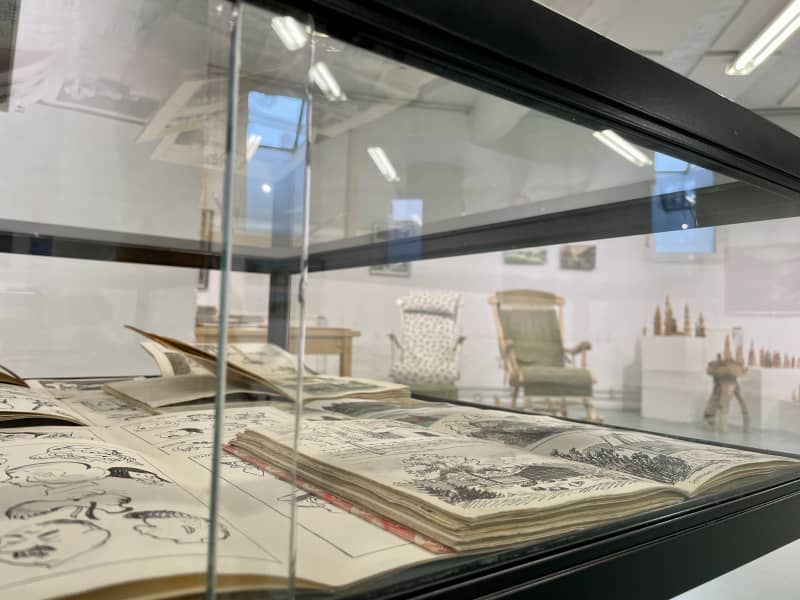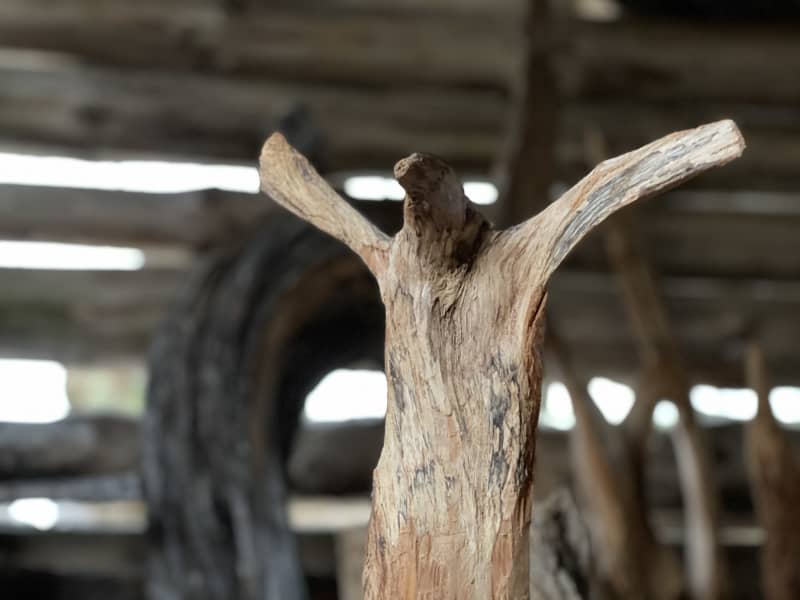Hundreds of new ITE artists emerged from a survey by the Union for Rural Culture and Education. Now the debate is on whether the works should be preserved after the artist’s death and who should take responsibility for them.
Hundreds of new ITE artists have been discovered in Finland in recent years through surveys carried out by the Finnish Association for Rural Culture and Education. The Federation has covered all of Finland except Uusimaa. At the same time, the value and significance of the works from the point of view of local identity and tourism has been assessed.
The acronym ITE stands for ‘self-made life’ and artists are self-taught.
The works are currently on display in the Cellar Gallery in Suonenjoki. The exhibition was put up by the local art society, as the elderly Jalkanen would not have been able to do it himself.

– This is unbelievable. I live in the same village and I haven’t known what kind of treasure is on the other side of the forest, says Arvinen
According to Arvinen’s own words, putting together Jalkanen’s exhibition has been heartbreaking for many reasons.
– Aulis is so infinitely talented, he has an absolutely crazy imagination and extensive know-how. As a person, he has made a great impression on me, Arvinen enumerates.

– And the great sadness is what happens to these works, Arvinen continues.
A versatile artist, he has written and composed during his career
Jalkanen’s collection, which started making art in the 1950s, includes not only paintings and sculptures, but also poems, compositions and diary entries.
Paintings and sculptures have been exhibited at the Art Society’s exhibitions many times. Other works were found, for example, on Jalkanen’s bookshelf.
– For example, the works painted on milk cans were only discovered for this exhibition, says Anja Jääskeläinen of the Art Society.
You can see the paintings in the video of the main picture of the story.
The collection of thousands of works should be recovered. The burden is too great for the art association.
– As an active member of the Art Society, I am horrified by the thought that we would have to take responsibility for their maintenance, Jääskeläinen states.
He hopes to find a space and people who can take good care of the works. There is a lot of material for research and theses.

The late Niilo Rytkänen’s work is taken care of by his widow and son
Jalkanen’s ITE art exhibition has attracted quite a few people in Suonenjoki. Word about Aulis’ wonderful life, which is the name of the exhibition, has also spread to other parts of Finland.

– Niilo said before his death that he would understand if some of the works were in such bad condition that they had to be thrown away, says Helena Rytkönen.
Decisions should be made while the artist is alive
The ITE artist should share his own view on the preservation of the works in time.
Help may be found in the family circle or the village community. If the creator dies, the fate of the works depends a lot on who owns the works or the environment in which they are located.
– The village association has taken responsibility for Ensio Tuppurainen Jätkä Onnela in Valkeala. There is a company behind Parikkala’s statue park. In Lahti, the museum took over the works of Johannes Ivako, Kallioinen lists.
– They could be displayed in public spaces, Pola suggests.

In Kallioinen’s opinion, municipalities should be helped to see the touristic and cultural-historical significance of ITE art.
– It is also an opportunity to create an interesting brand for the municipality, he says.
The ITE art collection is an expensive legacy
The works left as a legacy are usually a big financial burden for the heirs, village association or home region association. There are many types of expenses in the information. The works must be maintained, and if you want to keep them on display, there will be salary costs and costs for information and marketing.
– It would be ideal if we knew how to make use of the EU’s leader funding and promote the issue through the project, says Kallioden.

– ITE art tells about local identity and history perhaps in a different way than professional artists in their works and it also touches different audiences, Ketonen states.
This was seen last summer in Kuopio, when the local Korttelimuseo exhibited the works of Romurinesse and Löppunki, who were selected as ITE artist of the year 2022. The exhibition gathered a total of more than 10,000 visitors. It interested a rare number of men.
